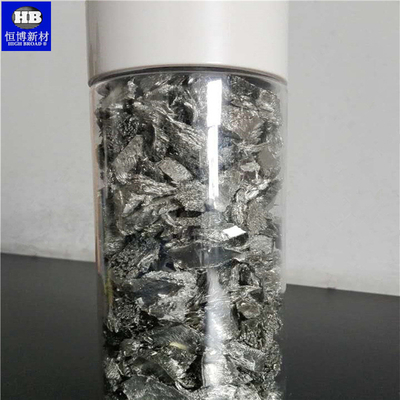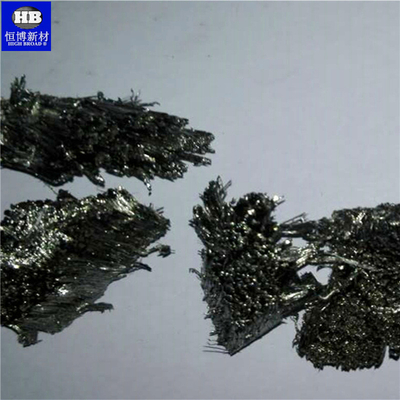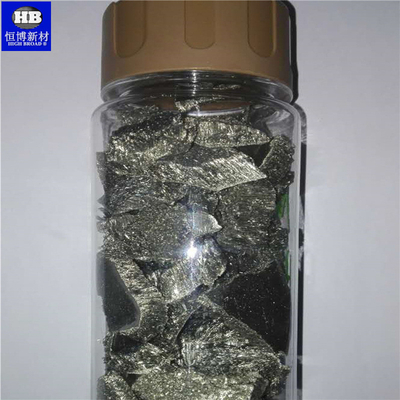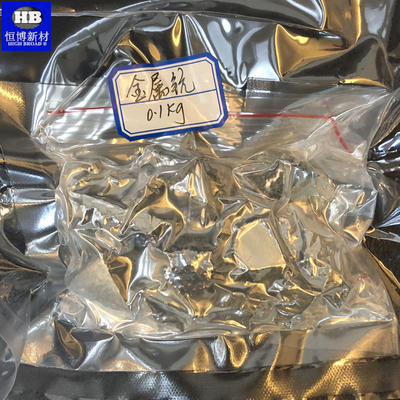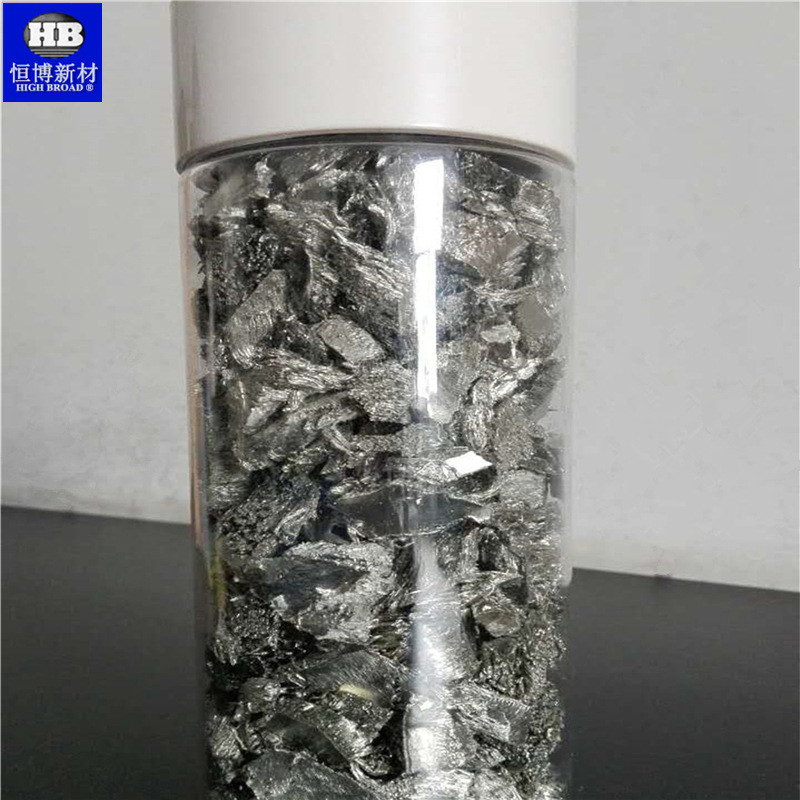Scandium Metal Sc 99.99% Rare Earth Elements
Product Details:
| Place of Origin: | China |
| Brand Name: | HB |
| Certification: | ISO, GB |
| Model Number: | Sc |
Payment & Shipping Terms:
| Minimum Order Quantity: | 1kg |
|---|---|
| Price: | USD3890/kg |
| Packaging Details: | Vaccum packed in drums or in wooden case bunddled on pallet |
| Delivery Time: | 14 work days |
| Payment Terms: | T/T |
| Supply Ability: | 1t/month |
|
Detail Information |
|||
| Material: | Scandium (Sc) Metals | Molecular Weight: | 44.96 |
|---|---|---|---|
| Appearance: | Silvery | Melting Point: | 1541 °C |
| Boiling Point: | 2830 °C | Density: | 2985 Kg/m3 |
| Electrical Resistivity: | 61.0 Microhm-cm @ 22 °C | Electronegativity: | 1.3 Paulings |
| Heat Of Fusion: | 3.80 Cal/gm Mole | Heat Of Vaporization: | 81 K-Cal/gm Atom At 2831 °C |
| Poisson's Ratio: | 0.279 | Specific Heat: | 0.133 Cal/g/K @ 25 °C |
| Thermal Conductivity: | 0.158 W/cm/K @ 298.2 K | Thermal Expansion: | α, Poly: 10.2 µm/(m⋅K) (at R.t.) |
| Young's Modulus: | 74.4 GPa | CAS Number: | 7440-20-2 |
| High Light: | 99.99% Scandium Metal,99.99% Scandium Rare Earth Metal |
||
Product Description
Scandium is a soft, silvery, yellow-white metal and a member of Group 3 of the Periodic Table, heading a list of 10 metals called the First Row Transition Elements. Scandium is the 35th most abundant element in the Earth’s crust. It tarnishes in air and burns easily once it has been ignited. It reacts with water to form hydrogen gas and will dissolve in many acids. Scandium is a very lightweight metal with a fairly high melting point and good resistance to corrosion. It is also a rare metal, not because it is hard to find, but because it is hard to find in a large concentration (i.e. an ore), and is thinly distributed around the world (0.0025% of the Earth’s crust), so collecting and purifying the substance is expensive and time-consuming. Interestingly, scandium is found in greater concentrations in the sun and certain other stars.
Applications:
The addition of scandium to aluminium limits the grain growth in the heat zone of welded aluminium components. This has two beneficial effects: the precipitated Al3Sc forms smaller crystals than in other aluminium alloys, and the volume of precipitate-free zones at the grain boundaries of age-hardening aluminium alloys is reduced. The Al3Sc precipitate is a coherent precipitate that strengthens the aluminum matrix by applying elastic strain fields that inhibit dislocation movement (i.e., plastic deformation). Al3Sc has an equilibrium L12 superlattice structure exclusive to this system. A fine dispersion of nano scale precipitate can be achieved via heat treatment that can also strengthen the alloys through order hardening. Recent developments include the additions of transition metals such as Zr and rare earth metals like Er produce shells surrounding the spherical Al3Sc precipitate that reduce coarsening. These shells are dictated by the diffusivity of the alloying element and lower the cost of the alloy due to less Sc being substituted in part by Zr while maintaining stability and less Sc being needed to form the precipitate. These have made Al3Sc somewhat competitive with titanium alloys along with a wide array of applications. However, titanium alloys, which are similar in lightness and strength, are cheaper and much more widely used.
The alloy Al20Li20Mg10Sc20Ti30 is as strong as titanium, light as aluminium, and hard as some ceramics.
The main application of scandium by weight is in aluminium-scandium alloys for minor aerospace industry components. These alloys contain between 0.1% and 0.5% of scandium. They were used in Russian military aircraft, specifically the Mikoyan-Gurevich MiG-21 and MiG-29.
Some items of sports equipment, which rely on lightweight high-performance materials, have been made with scandium-aluminium alloys, including baseball bats, tent poles and bicycle frames and components. Lacrosse sticks are also made with scandium. The American firearm manufacturing company Smith & Wesson produces semi-automatic pistols and revolvers with frames of scandium alloy and cylinders of titanium or carbon steel.
Dentists use erbium-chromium-doped yttrium-scandium-gallium garnet (Er,Cr:YSGG) lasers for cavity preparation and in endodontics.
The first scandium-based metal-halide lamps were patented by General Electric and made in North America, although they are now produced in all major industrialized countries. Approximately 20 kg of scandium (as Sc2O3) is used annually in the United States for high-intensity discharge lamps. One type of metal-halide lamp, similar to the mercury-vapor lamp, is made from scandium triiodide and sodium iodide. This lamp is a white-light source with high color rendering index that sufficiently resembles sunlight to allow good color-reproduction with TV cameras. About 80 kg of scandium is used in metal-halide lamps/light bulbs globally per year.
The radioactive isotope 46Sc is used in oil refineries as a tracing agent. Scandium triflate is a catalytic Lewis acid used in organic chemistry.
70 Chezhan North Road,Changsha, China 410100
Tel:+86-731-85713359 Fax:+86-731-85716569
Wechat/Whatsapp: +8618507315452
chris@hbnewmaterial.com chrishuang@vip.qq.com




